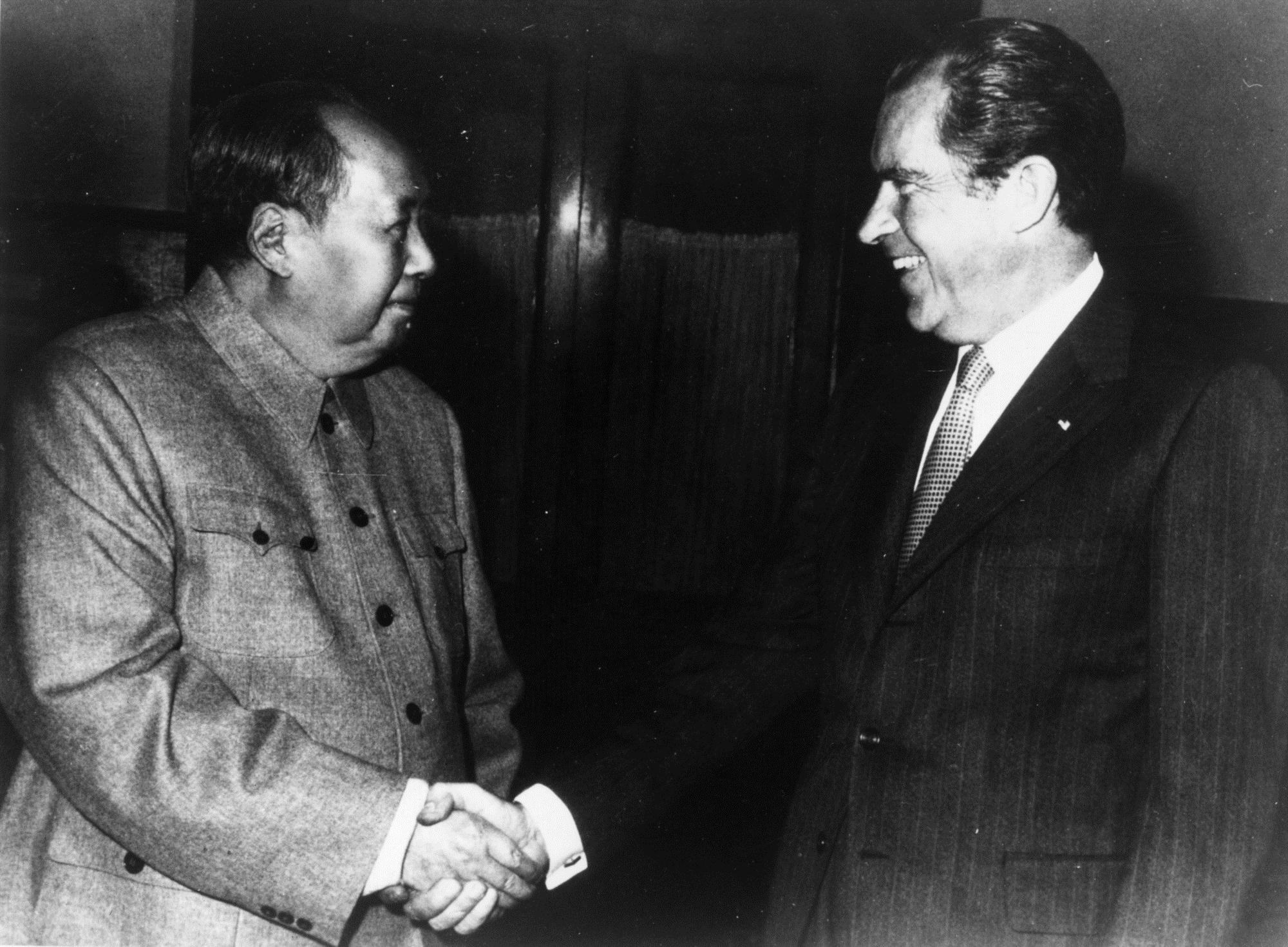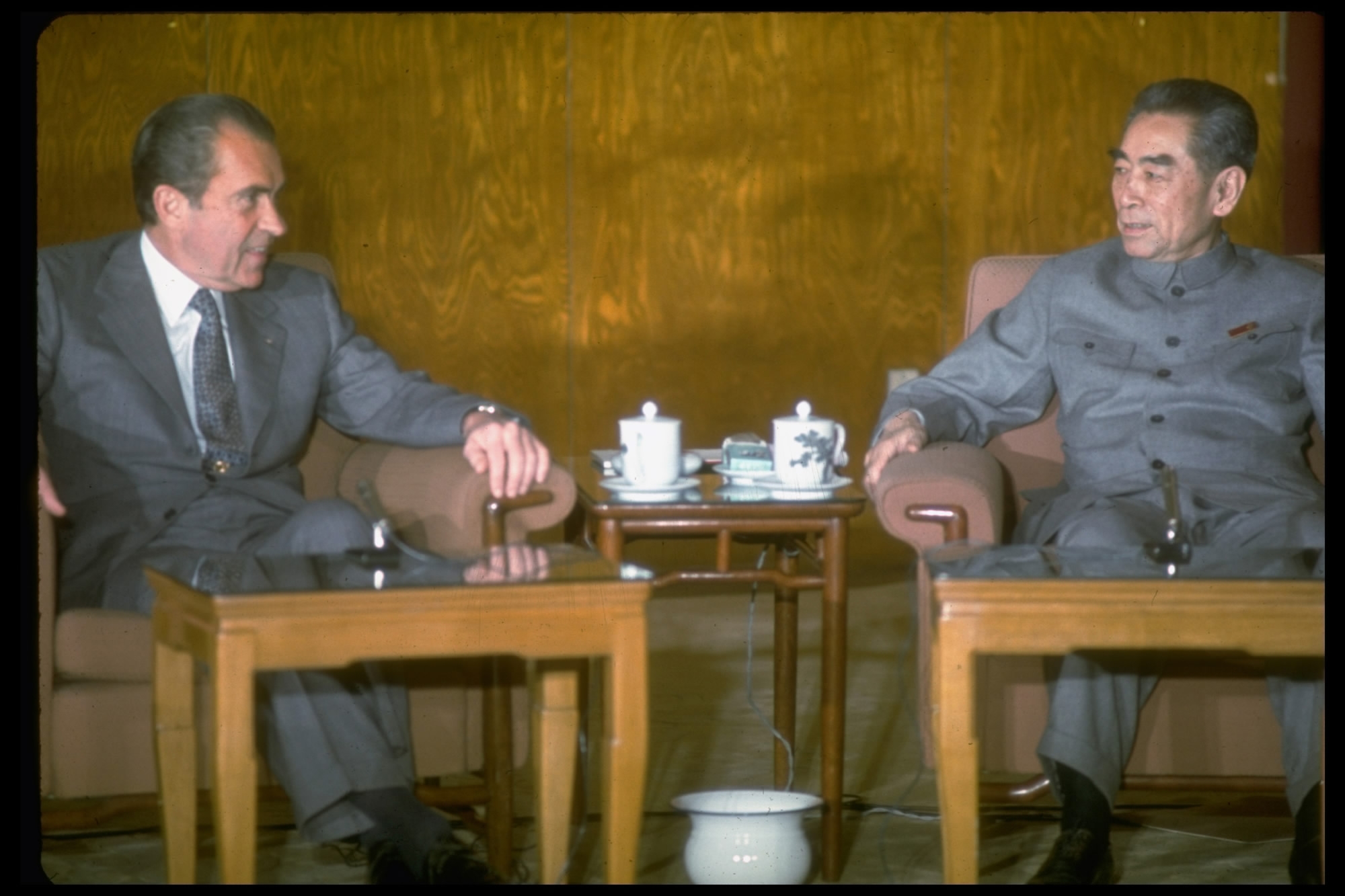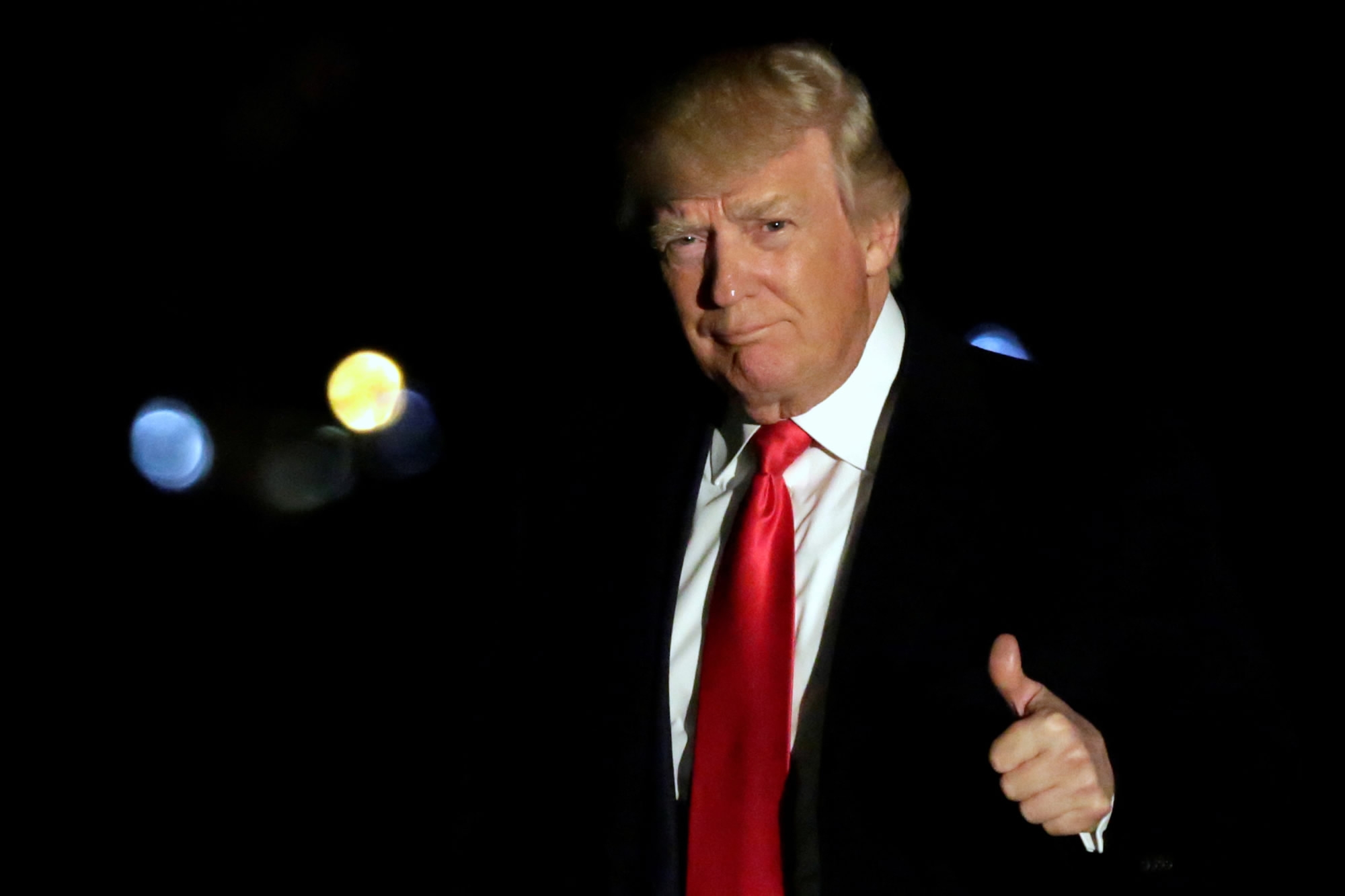Written by Ding Dai from World Insight with Tian Wei
On February 21, 45 years ago, Chinese Chairman Mao Zedong and US President Richard Nixon met to normalize relations between their two countries. Their meeting was brief, but it set the scene for what's become the most important economic relationship in the world.
Chairman Mao and President Nixon forged a new era with one handshake. Their hour-long discussion was a leap into the unknown after decades of hostility.
Chas Freeman, who was the principal US interpreter during Nixon’s visit to China, said the visit “was a huge gamble by both sides, particularly by the President of the United States, who went to the capital of a state that we didn't recognize."

CFP Photo
The US had isolated China since the founding of the People's Republic of China in 1949. A renowned anti-communist, Nixon wanted to reverse course by reaching out to him. Mao and Nixon avoided controversial topics in their meeting. Instead, the US held hard talks with Prime Minister Zhou Enlai, as both sides worked on a communique setting out their positions on a range of issues where they disagreed. It wasn't easy. With their work done, however, Nixon offered his hosts a final toast. "This was the week that changed the world," said Nixon.

CFP Photo
Mao and Nixon had carved a path for successive leaders from both sides to build a relationship that today interconnects the two economies, accounting for nearly 40 per cent of the world's total output.
“If we look back to history, the US actually faced a challenge from the Soviet Union. I think that was a more serious challenge for the US.” said Da Wei, director of the Institute of American Studies at the China Institute of Contemporary International Relations. He pointed out that China-US relations were better than Soviet-US ties since China and the US shared stronger economic ties and people to people exchanges. He also suggested that we should avoid strategic miscalculations.
Mr. Da Wei on US-China relations on World Insight with Tian Wei
After Nixon's ice-breaking trip, China-US relations have seen ups and downs in the past four and a half decades, and some of the key historical moments can be seen in the video below.
Historical moments in US-China relations

CFP Photo
US President Donald Trump's recent mixed messages on China have left more uncertainty over where that relationship is heading. On one hand, Trump said he would honor the one-China policy, and is willing to improve China-US ties. On the other, he has threatened to impose a 40% tariff on Chinese goods, and the US deployed the aircraft carrier USS Carl Vinson to the South China Sea as part of maritime operations.
“When President Nixon visited China, our common focus was the Soviet Union. Today, when we do China-US relations, our focus is each other,” said Professor Robert Ross, an associate of the John King Fairbank Center for Chinese Studies at Harvard University. He suggested it is a new experience for both China and the US. For China, it’s a learning process on how one can use power in a way that doesn’t destabilize or challenge others or create concerns, while for the US, this is also a new experience on dealing with a rising power. Professor Ross suggested the answer for both sides is that both need to try to exercise restraint. “If we can both exercise restraint, the relationship can be more cooperative and less competitive. ”
Professor Robert Ross, an associate of the John King Fairbank Center for Chinese Studies at Harvard University on World Insight with Tian Wei









